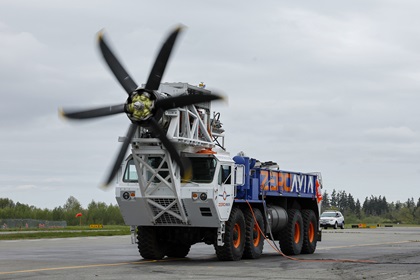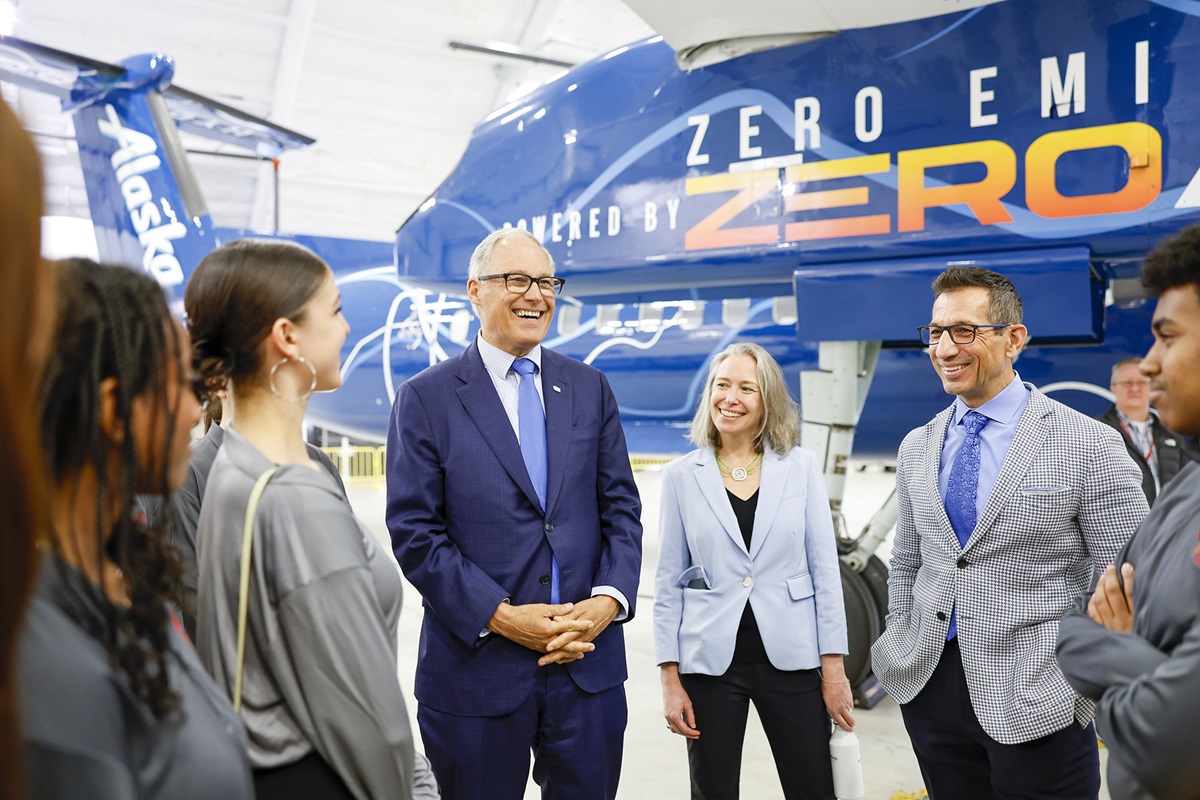Alaska Airlines, ZeroAvia collab for zero-emissions future
A retired Bombardier Dash 8-Q400 turboprop from Alaska Airlines will be retrofitted with a hydrogen-electric powerplant from ZeroAvia to further the reach and relevancy of zero-emissions flight technology.
Adorned with a new livery, highlighting the partnership and its mission, the 76-seat regional Q400 was formally handed off at an event held at ZeroAvia’s Snohomish County Airport (Paine Field) research and development site in Everett, Washington. Local high school students from Raisbeck Aviation High School were in attendance and joined by Washington Gov. Jay Inslee, Rep. Suzan DelBene (D-Wash.), and Snohomish County Executive Dave Somers.
"This is a great step forward in aviation innovation, to help create a new future of flight—right here at home,” said Alaska Airlines CEO Ben Minicucci. “Alaska Airlines has defined a five-part journey to achieve net zero carbon emissions long-term, but we can’t get there alone. New technologies are required to make that future possible, and we’re thrilled to partner with industry leader ZeroAvia to make new zero emissions options a reality.”

ZeroAvia also used the event as an opportunity to introduce its multi-megawatt modular electric motor system. The 1.8-MW prototype configuration was demonstrated with a propeller spin on ZeroAvia’s 15-ton HyperTruck ground test rig. When combined with ZeroAvia’s higher temperature PEM (proton exchange membrane) fuel cells and advanced power electronics, both in-house developments, the company’s electric motor technology is one of three key building blocks for bringing commercially viable hydrogen fuel cell engines to larger aircraft.
ZeroAvia explained that the company’s “hydrogen-electric engine uses fuel cells to generate electricity from hydrogen fuel, before using that electricity to power electric motors which turn the aircraft propellers.”
According to ZeroAvia, “Aligning ZeroAvia’s powertrain with the Dash 8-400 airframe will represent a commercially viable zero-emission aircraft with fuel cell engine technology around five times more powerful than what has been demonstrated anywhere to date.” The company is currently in an engineering partnership with De Havilland Canada, the original manufacturer of the Dash 8 line of aircraft, to exchange data and airframe information.
Val Miftakhov, founder and CEO of ZeroAvia said, “Demonstrating this size of aircraft in flight, powered entirely by novel propulsion, would have been unthinkable a few years ago. Launching this program puts us on track for a test flight next year, and accelerates our progress toward the future of zero-emission flight for Alaska Airlines and for the world at large.”





